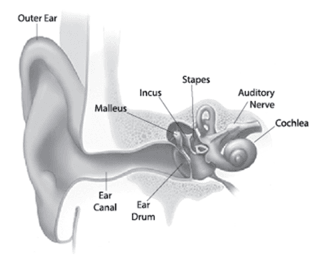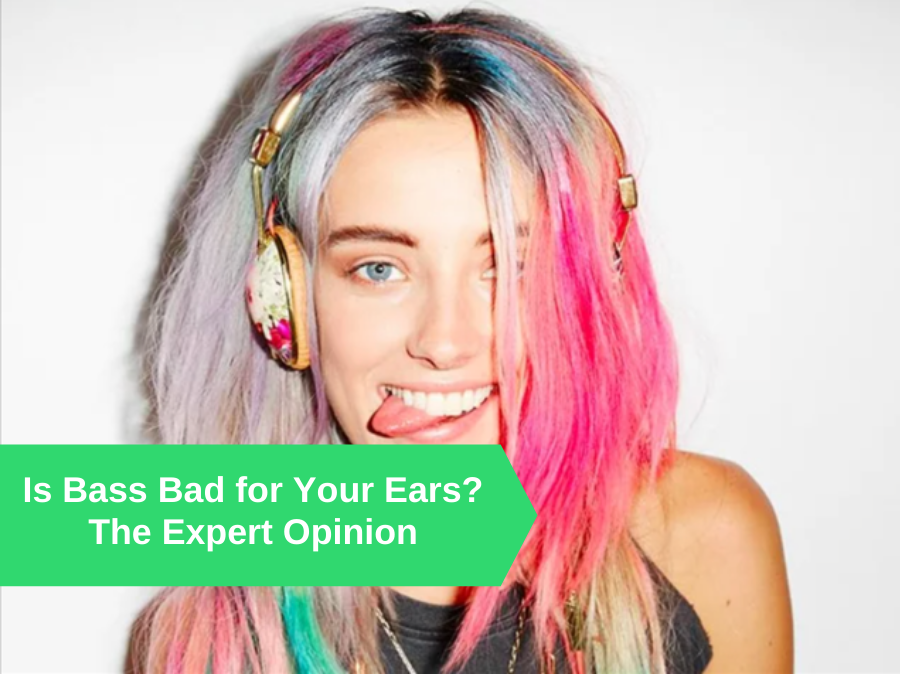Do you love boosting the bass as you pound the pavement, but worried what it’s doing to your ears? This article draws on expert opinion to bring you valuable advice on how to protect your hearing from the big bad bass.
Music and sound are my life. If anyone told me that I couldn’t listen to my favourite bass tunes anymore, I would be mortified.
The biggest danger with bass sounds is the impact on our ears is not as obvious as higher frequencies. Because the low frequency isn’t as noticeable or irritating, we may not consider the damage it could be having.
Loudness is measured in decibels (dB). Damage begins to occur if you expose your ears to consistently loud sounds above 85dB. Anything above 120dB on a regular basis and you can say goodbye to perfect hearing.
Let’s put these numbers into perspective: a whisper measures at 30dB, a chainsaw at 120dB. If you pump the volume up on your iPod or attend a music concert, you are exposing your ears to the same 120dB level of sound.
If you’re a bass player, guitarist or drummer, you will be exposing your ears to regular sounds of 110dB-125dB! Your ears can only handle minutes of that before you cause permanent damage.
If you are in the music scene yourself, or even if you’re not, you may know someone who has experienced tinnitus. This is usually something that musicians develop and manifests as a constant ringing in your ears, either temporarily or permanently. This ringing sound can be as loud as 70dB, the same as a telephone ringing. Sound awful? It is! Before we delve into the ways you should be protecting your ears from all of this, let’s look at how our ears receive sound.

STEP 1: The sound waves from the instrument, headphones or device enter the outer and travel down the ear canal toward the eardrums.
STEP 2: The eardrum vibrates and sends these vibrations to 2 tiny bones in the ear- the malleus, incus and stapes.
STEP 3: These bones increase the sound and send them to the cochlea. This is a snail shaped structure, no bigger than a pea, that is filled with fluid.
STEP 4: The vibrations cause this fluid to ripple.
STEP 5: Hair cells sitting inside the cochlea are stimulated by the ripples. Hair cells near the wide end of the cochlea, detect higher pitched sounds, whereas those nearer the centre detect the lower-pitched sounds, like the bass sounds coming from your earphones.
STEP 6: As the ripples cause the hair cells to move up and down and bend against the top of the cochlea, channels open up, chemicals rush in and create an electrical signal.
STEP 7: The auditory nerves carry this electrical signal to the brain, that turns it into the sound our brains “hear”.
It is damage caused to these hair cells, when they get permanently bent or laid down, that leads to hearing damage and loss.
Types of hearing loss
Tinnitus is one type of temporary hearing impairment caused by the hair cells in the cochlea being permanently or temporarily laid down or bent.
Noise induced hearing loss or occupational hearing loss is hearing impairment caused by working with loud noises at work. This and tinnitus are not only an issue for musicians, but anyone who works daily with loud equipment.
Sensorineural hearing loss is the most common type of hearing loss. This is also caused by damage to the inner ear nerves and hair cells. This can occur due to age or noise.
Temporary threshold shift is a temporary hearing impairment. If you have attended a concert before or spent a prolonged period in a loud environment, you may have noticed that sounds are muffled afterwards. Luckily the symptoms don’t tend to last long, but they do indicate mild damage. Exposing your ears too frequently to this kind of abuse could lead to permanent damage.
But there are measures you can and should be taking to protect your ears from strong bass.
Ear Protection Methods
Keep the volume level safe. I love to pump out my tunes. But I do also understand the damage it can do to my ears. Just remain mindful and remember, full volume means 120dB…that’s 45dB above safety level! Our ears are pretty good at telling us when something is wrong. Ear fatigue will begin to set in. Don’t ignore it!
Wear protective ear gear. If you are a musician or are frequently around loud sounds, you should be using earmuffs. There are some great ones on the market (insert internal link for best ear protector’s article) that provide ultimate comfort and protection. You can also try ear plugs if you want something a little more compact. Or semi-earplugs that don’t go into the ear canal, but are held in place by a rigid headband that connects them.
Take regular breaks. I know how difficult it is to tear yourself away from a great set, jam session or album on your iPod. But giving your ears a break is vital. Give yourself a break every 15- minutes if you can and ideally, your ears need 18 hours of recovery time from extended loud bass sounds. This will give you ears time to readjust and get back to bass!
Let’s Bass It…
Your hearing is irreplaceable. If you are a big bass fan and love to listen at full volume it might be time to give you ears some TLC. Pump it up, but for shorter periods and try to keep the volume at a reasonable pump! If you are headed to a gig, then get yourself some ear protection gear. Your ears will thank you for it.

